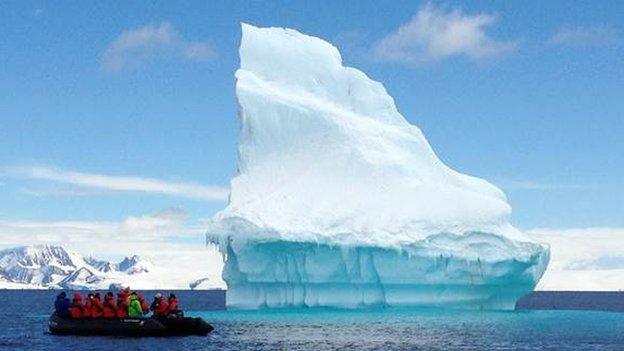Artist captures Antarctic for Scott Polar Research Institute
- Published
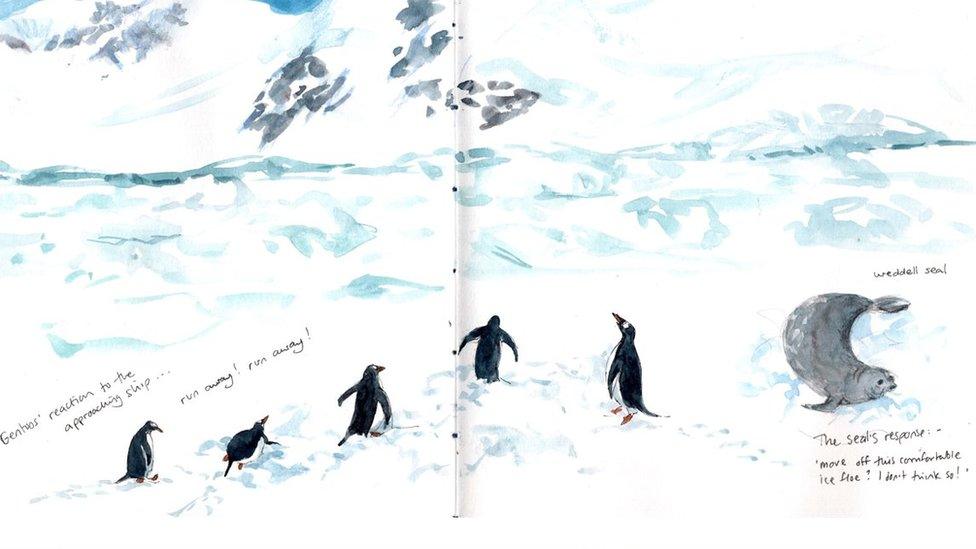
Artist Claudia Myatt imagined the reactions of penguins and a seal as the polar ship approached the Lemaire Channel on the west side of the Antarctic Peninsula
Penguins, polar landscapes and old whaling boats are among many scenes sketched by an artist-in-residence during a trip to the Antarctic region.
Claudia Myatt, from Suffolk, was given the residency by the Friends of the Scott Polar Research Institute in Cambridge.
During a five-week trip on a Royal Navy ship in 2021, she visited a number of islands, capturing the landscape and wildlife in her sketchpads.
It was "a lifetime's dream", she said.
The institute is part of Cambridge University, and the Friends group appoints Antarctic and Arctic artists.

The wrecks of former whaling boats share the South Georgia beaches with the seals
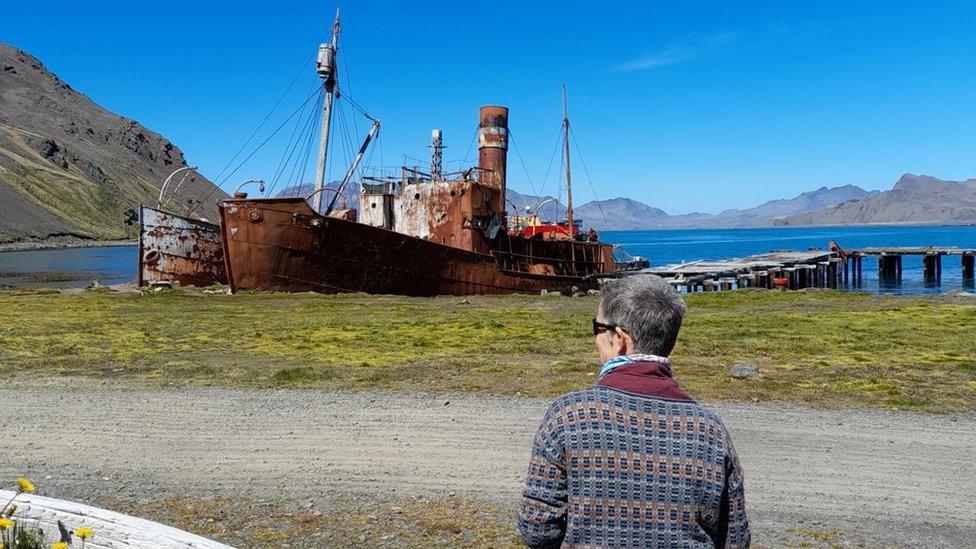
Ms Myatt sketched the boats at Grytviken, on the shore outside the island's museum
The marine artist and illustrator, from Woodbridge, had to quarantine at an old RAF station near York for eight days before her journey, which was "a bit grim, but necessary", she said.
She flew out with the RAF to meet HMS Protector, an icebreaker, in the Falkland Islands.
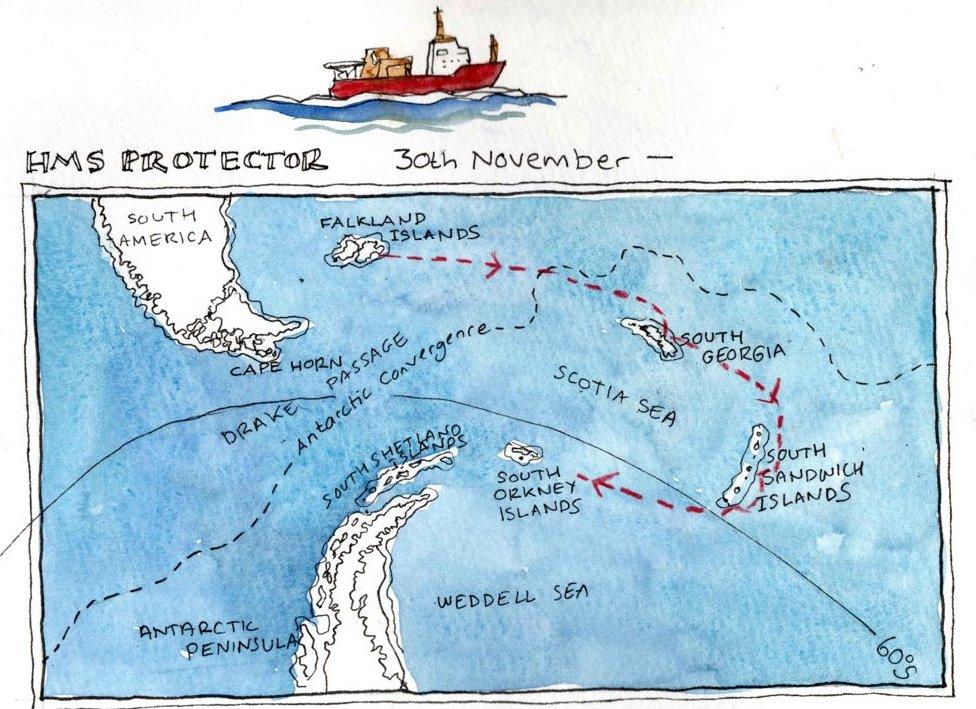
A map shows part of the route taken by HMS Protector
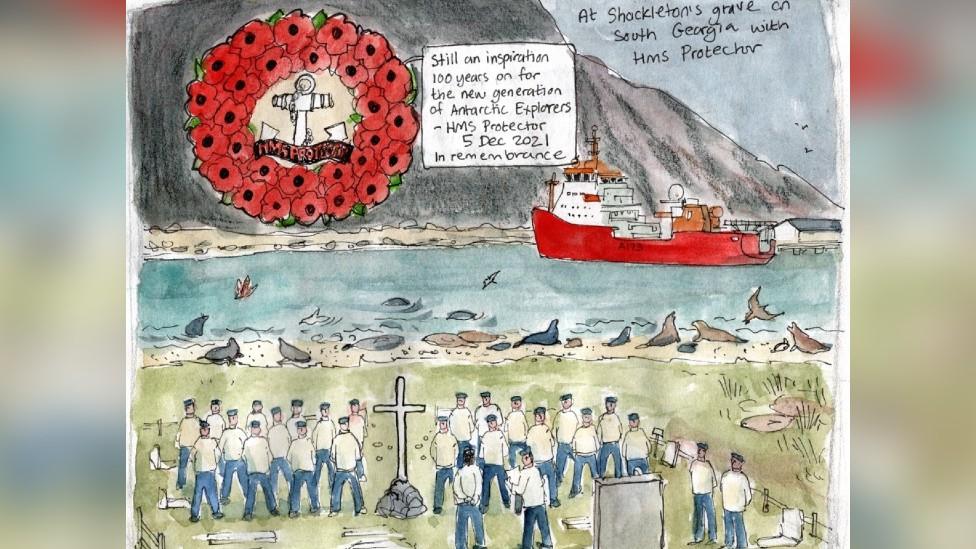
The ship's crew took part in a memorial service on South Georgia 100 years after the death on the island of Antarctic explorer Ernest Shackleton
She said: "I used my sketchbooks as a journal... pages filled up fast, as I tried with line and colour to portray not just what I was seeing, but what I was feeling - that clarity of the air that somehow makes you feel intensely alive, even when a knife-edged wind is trying to tear the sketchbook out of your hand."
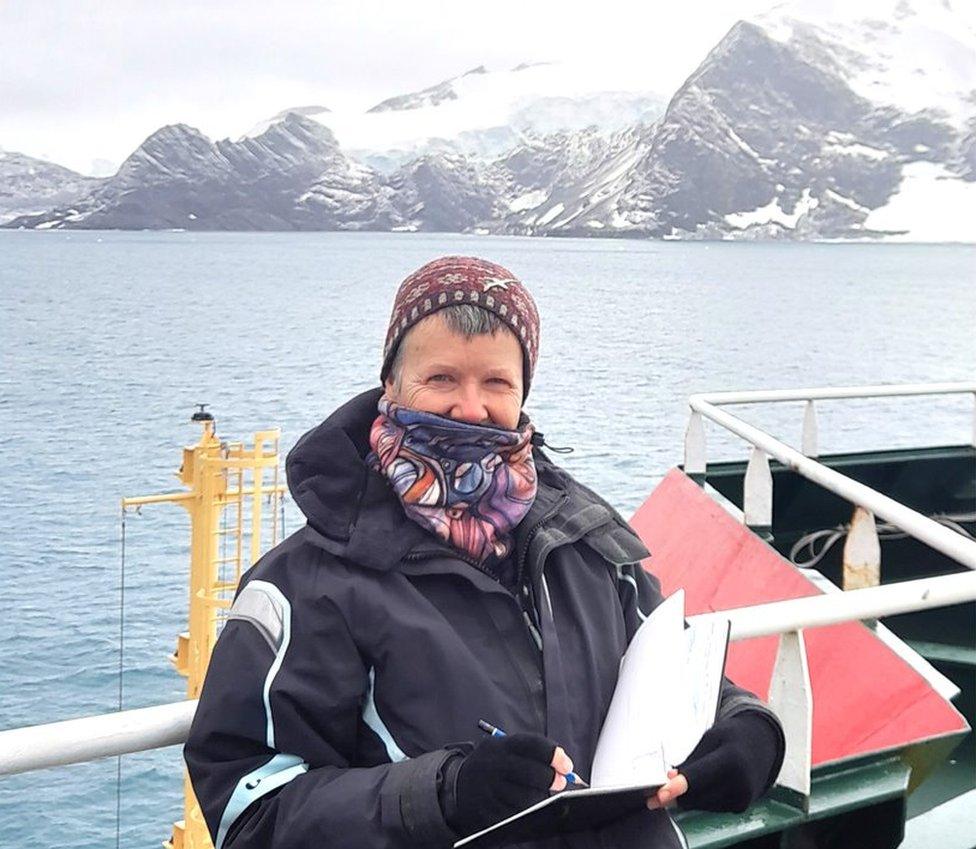
Sketching on the deck of the Royal Navy icebreaker ship
Among her pictures are former whaling boats in South Georgia, once home to the whaling industry, but now the South Georgia Heritage Trust, external works "to redress past damage to its environment, to protect its wildlife now and in the future, and to preserve the human heritage of the island which so clearly shows the best and worst of humanity".
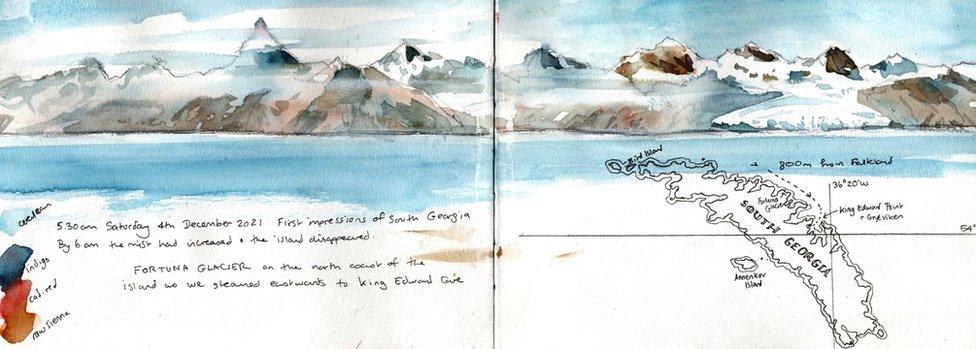
The artist likes to document what she sees, adding comments and maps
She uses watercolours, along with sketching pens and sometimes coloured pencils to create her artwork.
"I like to record the history of a place and I use my sketchbooks to tell a story," Ms Myatt said.
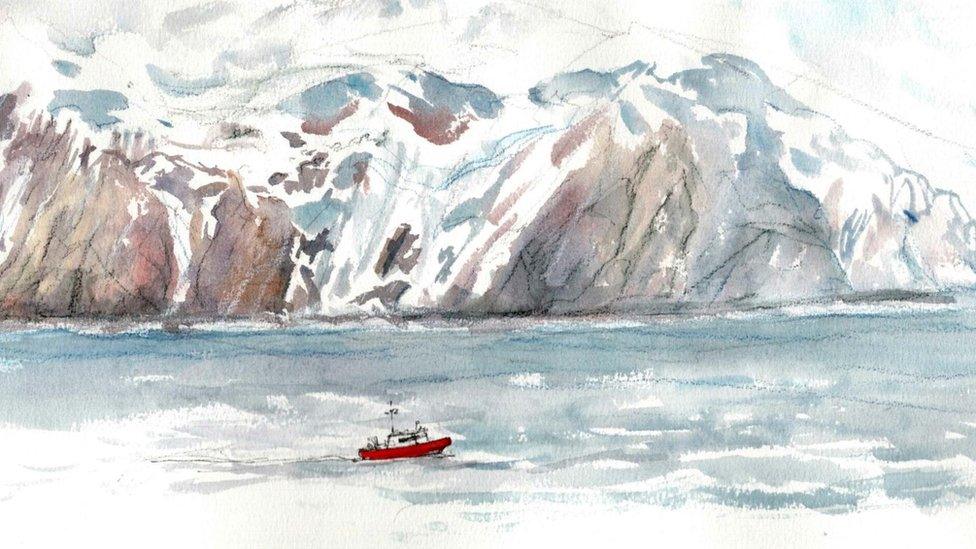
HMS Protector's small survey ship, James Caird, used for inshore survey work, is dwarfed by the landscape
Now back home in her studio on an old tug boat, she is collating her work and plans to share her drawings.
"I have full sketchbooks and lots of ideas," she said.
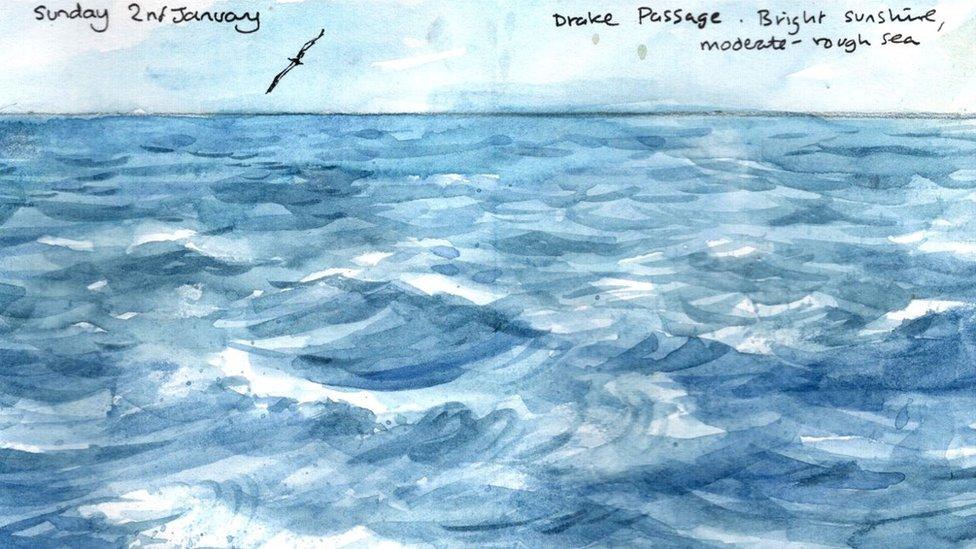
"I use a sketchbook as a diary - ordinary day-to-day life is just as worth recording as the pretty views," the artist says
Charlotte Connelly, curator of the museum at the Scott Polar Research Institute, said having the artist-in-residence programme enabled them to "build on our collections with contemporary work that reflects what is happening in the areas".
"We often look for someone who does something we don't really have here, and Claudia has a documentary way of capturing what she sees in her sketchpads," she added.
"We hope this will contribute greatly as part of our outreach programme in the future."

Find BBC News: East of England on Facebook, external, Instagram, external and Twitter, external. If you have a story suggestion email eastofenglandnews@bbc.co.uk, external
- Published5 April 2022
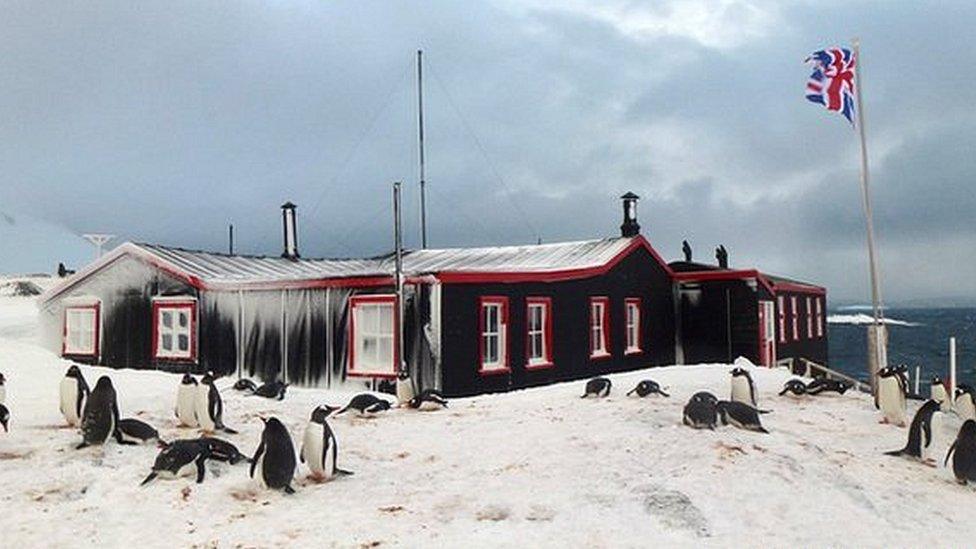
- Published1 April 2022
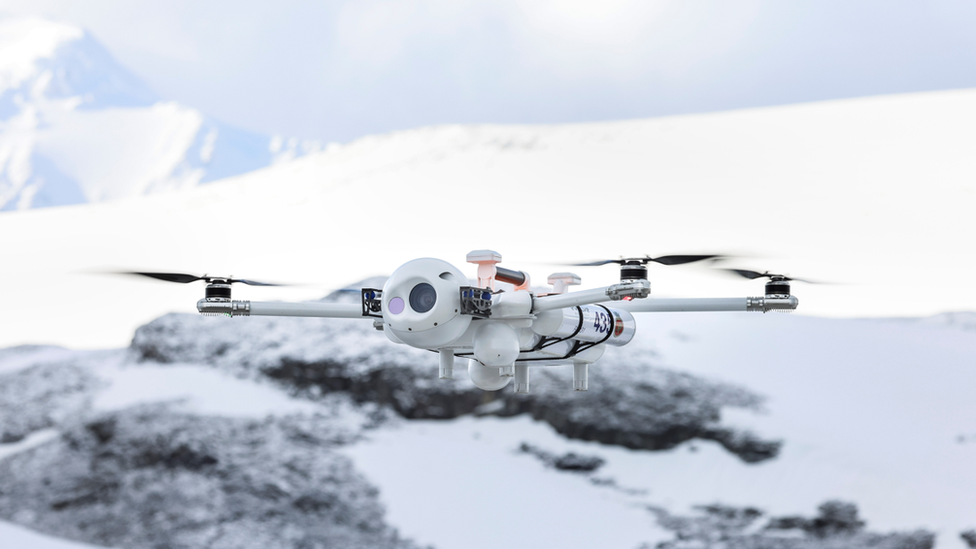
- Published31 March 2022
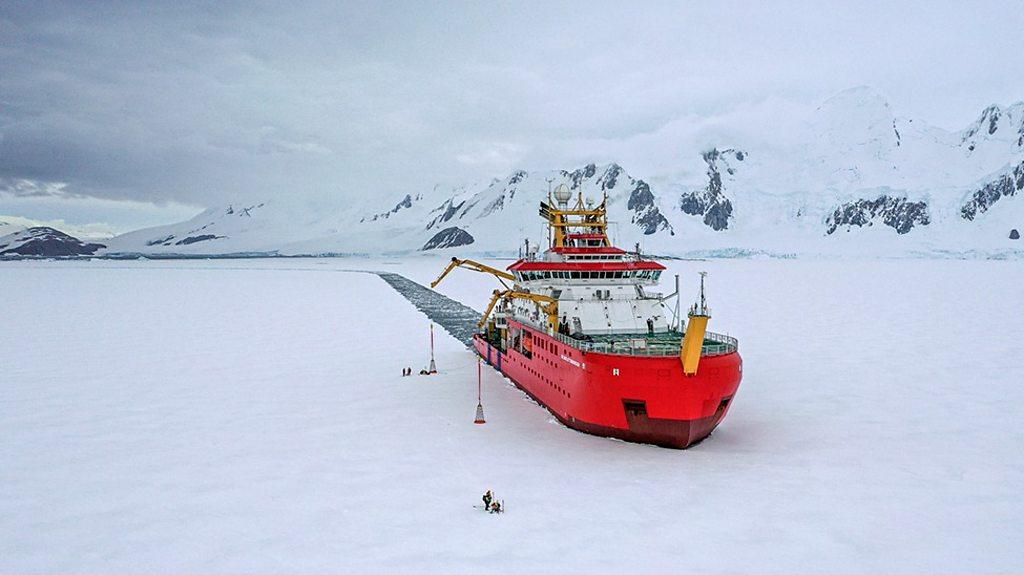
- Published15 March 2022
- Published18 November 2020
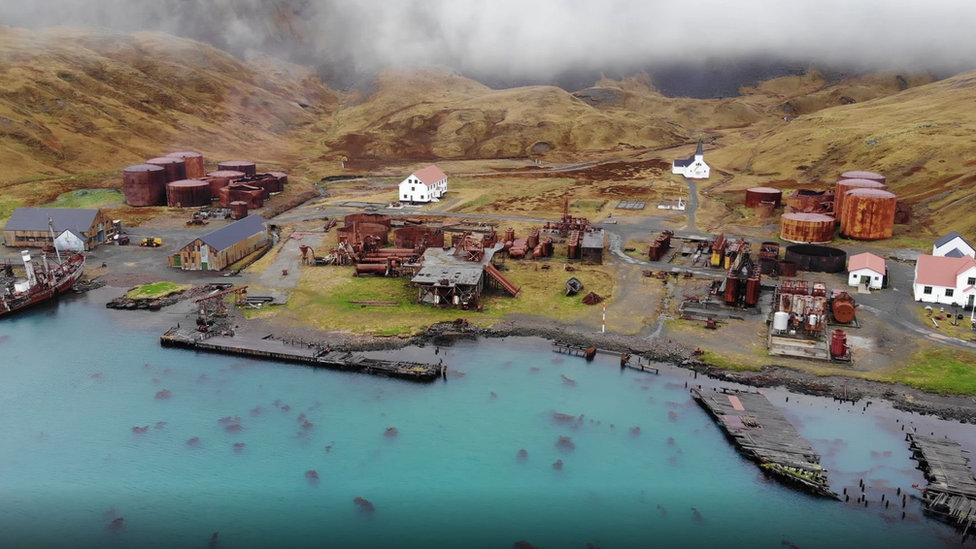
- Published20 June 2014
